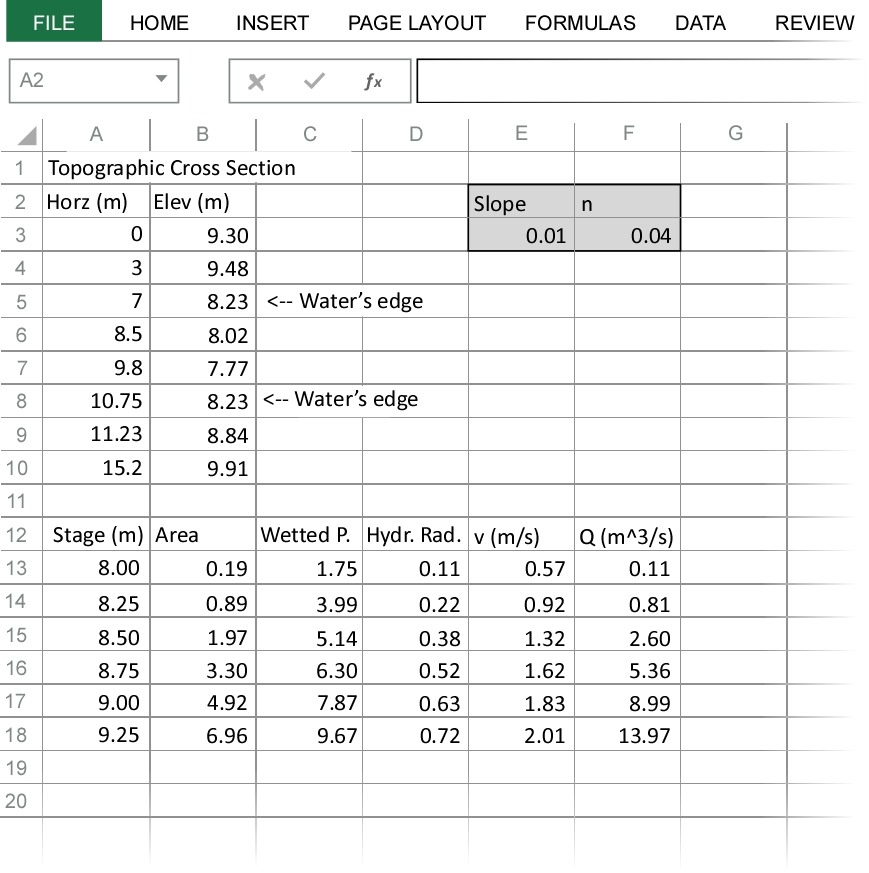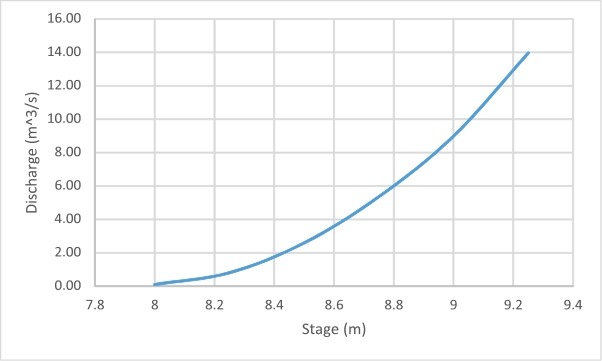You can easily develop a rating curve from a topgraphic cross-section using HydroTools functions.
1) Start by creating a list of stages ranging from just above the lowest elevation point in the cross-section to just below the lowest of the two elevations at either end of the cross-section.
2) As in the Determining Manning's n from Discharge example, use the ChannelArea() and WettedPerimeter() functions to calculate these values for each stage. From this data, calculate the hydraulic radius and, using Manning’s equation, the average velocity for each stage.
Note: In using Manning's equation you need to specify a Manning's roughness coefficient. This can be directly determined for a given stage as demonstrated in the Determining Manning's n from Discharge example. Or Manning's n can be estimated for a given reach using tables such as Table 9.6 in Dingman (Physical Hydrology, Prentice Hall, 2002). Here we will assume Manning's n is constant with increasing stage. In reality, the roughness increases somewhat as the stage increases over the flood plain. If the change in Manning's n with increasing stage is known or can be estimated, the method described here can be easily adapted to account for this.
3) Finally calculate the channel discharge by multiplying the channel area by the average channel velocity calculated using Manning's equation (see Determining Manning's n from Discharge example).

4) The rating curve is usually plotted as stage (x-axis) versus discharge (y-axis).
